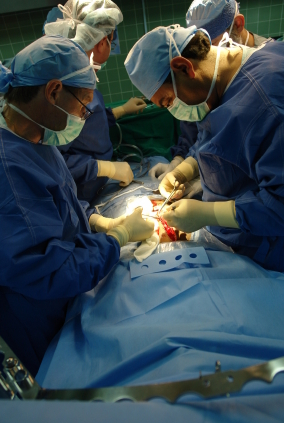 How to make care, and much else, affordable
Hector McNeill1
SEEL
The application of a static national accounts approach to the assignment of funds to a growing problem will impoverish the source of funds and never resolve the problem. Put another way the source of funds needs to grow but in a static national accounts approach this creates a zero-sum situation leading to a drain on national income.
The recent discussions concerning the care system is such as example and the raising of levies or taxes of any kind is not an adequate solution since the levies will soon have to be raised to keep up, or else care standards will decline.
The general error is to base the policy on calculations of nominal pounds when in reality the government should be focusing on the calculation of real incomes or the purchasing power of the pound
This real incomes approach can help reduce the impact of provisions on disposable real incomes and help manage the care issue from the standpoint of a sustainable long term perspective.
|
Purchasing power and real incomes
It is self-evident that if the purchasing power of each pound in the economy was increased then each pound would purchase more real goods and services if the prices paid remained stable. Also, if the value of each pound in circulation is increasing then there is no incentive for the producers of goods and services to increase unit prices because the real margins and incomes earned from the sale of goods and services would also rise in real terms. The main disincentive to raising unit prices is, of course, competition. Why would a product or services provider wish to lose market share by raising unit prices when the competition maintains prices at a fixed level? The effective competitor aims to increase productivity to enable sales at marginally lower unit prices to gain market share.
Organic growth
Many policy makers equate economic growth or "demand levels" with a rise in economic turnover measured in currency units. This approach will often obscure the real growth which is a measure of the increase in physical goods and services achieved for the same, or less, physical resource inputs. This can be achieved as a result of increases in physical productivity resulting from changes in technology and technique (innovation) and associated rises in competence of management and work forces based on the accumulation of tacit knowledge. Therefore, organic growth can result in a source of growth in the purchasing power of wages, even although nominal wages have not been increased, but rather, unit prices have been reduced.
Caring functions
 The caring sector, covers all life stages from pre-natal, post-natal and general health and support for the elderly. With improvements in health care in this country linked to the establishment of the National Health Service in 1948, life expectancy has increased and as a result there is an increasing group of largely retired individuals who at some point require specialized care services. The extent of these requirements has been exacerbated by a very slow transition to preventive medicine based on improved life styles including nutrition and exercise. The NHS has undergone many "reorganizations" which have tended to result in the addition of multiple, relatively highly paid administrators and managers concerned with the oversight of delivery of medical and nursing by medically qualified care. As a result those delivering the care for any life stage are subjected to a range of constraints and performance targets that are not directly related to best practice care for patients. There has been an increase in the contracting out of a range of services to private operators whose main objectives are operational viability and profits. The problem is that some private entities are not providing goods and services but are directly concerned with direct patient care provisions. There is therefore a tension between the quality of services provided and profitability. Shareholders are mainly interested in dividends and profit. Therefore management comes under a degree of pressure to "perform" in terms of profits and this can lead to a range of internal economies in the name of "efficiency" which prejudice the quality of care. The caring sector, covers all life stages from pre-natal, post-natal and general health and support for the elderly. With improvements in health care in this country linked to the establishment of the National Health Service in 1948, life expectancy has increased and as a result there is an increasing group of largely retired individuals who at some point require specialized care services. The extent of these requirements has been exacerbated by a very slow transition to preventive medicine based on improved life styles including nutrition and exercise. The NHS has undergone many "reorganizations" which have tended to result in the addition of multiple, relatively highly paid administrators and managers concerned with the oversight of delivery of medical and nursing by medically qualified care. As a result those delivering the care for any life stage are subjected to a range of constraints and performance targets that are not directly related to best practice care for patients. There has been an increase in the contracting out of a range of services to private operators whose main objectives are operational viability and profits. The problem is that some private entities are not providing goods and services but are directly concerned with direct patient care provisions. There is therefore a tension between the quality of services provided and profitability. Shareholders are mainly interested in dividends and profit. Therefore management comes under a degree of pressure to "perform" in terms of profits and this can lead to a range of internal economies in the name of "efficiency" which prejudice the quality of care.
There are many cases of substandard private care homes which have seen care-giving becoming a way to maintain captive clients (patients) in exchange for money as a cash flow generator. Economies such as under staffing, use of prescription medicines to make resident patients more docile and "less trouble" and a generally off-hand treatment of people in need of more attention and care. There is therefore a risk associated with handing direct care provisions to profit-based concerns.
The growth in the care requirement
 As mentioned with increasing longevity the care requirement is increasing and based on the available data provisions are not expanding quickly enough. One suggestion which is related to the general health ecosystem is that efficiency can be enhanced by integrating the health and care services so as to cover all life stages. As mentioned with increasing longevity the care requirement is increasing and based on the available data provisions are not expanding quickly enough. One suggestion which is related to the general health ecosystem is that efficiency can be enhanced by integrating the health and care services so as to cover all life stages.
Macroeconomic policies, and in particular monetary policy, since the early 1970s have sustained a state of affairs where the constituents who earn their income from physical and financial assets have enjoyed a very rapid rise in wealth whereas wage-earners working in the supply side production of goods and services have seen their real incomes decline. More significantly, during the last 13 years under quantitative easing, investment and productivity in supply side goods and services production have declined leading to a significant constraint on the ability to raise wages.
Paying for care
Under such circumstances levying any charges on employment or personal income tax as a basis for paying for NHS or care provisions cannot represent a sustainable solution because real growth in production and wages is static or falling while the requirements for health and care provisions continue to rise. It is therefore necessary to rely on organic growth to raise corporate productivity and margins as well as to moderate or lower unit prices to raise real incomes. Under such circumstances there is an organic growth in the ability of companies and wage-earners to afford to contribute more to health and care provisions. However, his does not require rises in national insurance contributions or in taxation because the costs of health service provisions and care would also experience a relative decline as a result of improved productivity.
Managing the transition
Care provisions should be integrated with the NHS and brought in-house to the national service so that the care provision remains outside the profit-based operations. However, all other provisions such as materials, medicines and supplies should be subject to performance contracts that contain productivity clauses that relate to prices paid for provisions. This can be facilitated by introducing a productivity incentive based on a real incomes policy where companies that achieve organic growth measured in terms of unit price declines will end up with performance rebates paid from a Price Performance Levy. The speed with which companies can improve their productivity will depend upon their particular factor and consumption market conditions but could be managed through companies managing their Price Performance Ratio so as to minimize price performance levies; it is possible for levies to reach zero.
Why is this better than taxes?
In a period of frank depression brought on by monetarism and Covid-19 it is necessary to stop applying zero-sum national accountancy to determine "affordability" simple because this static basis of calculation can never solve a situation when there is a growth in required consumption (care). This will result in taxations constantly being ratcheted upwards in a strategy that impoverishes the nation because real incomes and corporate productivity are stagnant or falling or not accompanying the growth in care requirements. There is a need to provide incentives for organic growth.
Potential gains
A £2 trillion economy can generate rapid organic growth and real incomes through the dissemination of state-of-the-art technologies and techniques. Bringing most companies up to best practice using low risk state-of-the-art can raise productivity by at least 100%. The time scales for impact will vary from between 3 and 12 years leading to an organic or real economic growth in excess of 3% or 4% or at least £60 billion each year. Rather than spend, at this time, enormous amount of funds on attempting to raise R&D levels in the UK it makes a lot more sense in the short to medium term, it what is a crisis, to concentrate of boosting productivity that can result in rapid returns within the short to medium term by providing incentives for companies to raise productivity, raise wages and lower unit prices. The ease with which companies can participate in such a process will depend upon the state of technologies in their sectors and competition. Since this can also set a course for growth, not only in real wages and onshore production of manufactured products, this also provides a launch pad for accelerating growth. There is no need for buzzwords or imagery of "world beating initiatives" but rather there is a need to realize that the real incomes approach is a more practical and lower risk strategy than current monetary and fiscal approaches. Advancing is only possible through the promotion of investment in lower risk activities that can generate organic growth. As a result, both the National health Service and Care can be brought onto a sustainable growth path and avoid initiating a cascade of uncontrollable taxation which will over-burden the population with potentially disastrous consequences.
1 Hector McNeill is director of SEEL-Systems Engineering Economics Lab
All content on this site is subject to Copyright
All copyright is held by © Hector Wetherell McNeill (1975-2021) unless otherwise indicated
|
|
|
|
|